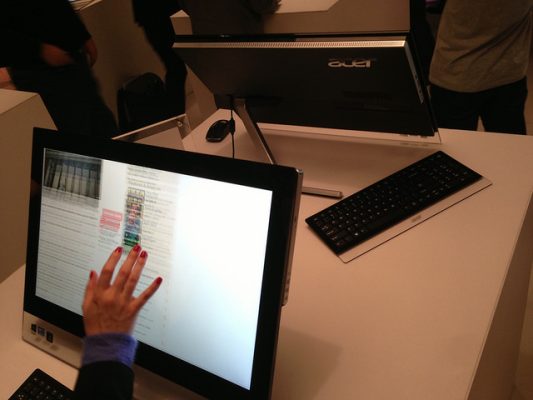Touchscreen News
The Future of Touchscreen Technology and Where it’s Headed
Touchscreen technology is found in nearly industry and market, ranging from automotive and retail to healthcare and manufacturing. It allows human operators to control machines and/or computers through a touch-based interface. When compared to traditional mechanical interfaces (e.g. physical keyboards), touchscreens are believed to offer a higher level of reliability, durability, accuracy, and user satisfaction. But the touchscreen market is changing, with new features and concepts being added on a monthly basis. So, what’s in store for the future of touchscreen technology?
Dual Touchscreen
Originally pioneered in 2004, dual touchscreen is special type of touchscreen setup in which two screens are used. Just one or both of these screens can support touchscreen technology, depending on the manufacturer’s specifications. An example of a dual touchscreen device is the Nintendo DS video game device, which features two separate screens, one of which has touchscreen capabilities. Dual touchscreens have become increasingly popular in recent years, as it allows for a wider range of applications, both in the consumer and commercial markets.
Flexible Touchscreens
Another trend that you can expect to see more of is the use of flexible touchscreen interfaces. In the past, touchscreen devices have been restricted to flat, even surfaces. But manufacturers are hoping to change this with the introduction of new flexible interfaces. As noted in an article published by GizMag, there’s even a full flexible touchscreen wristwatch that’s expected to hit the market later this year. Developed by Polyera, the “Wove Band” uses E-Ink technology to create a functional touchscreen interface in a flexible band.
Acoustic Pulse Recognition
What in the world is acoustic pulse recognition? This is a revolutionary new type of touchscreen technology that uses acoustic sound waves to register touch. Touching the surface of an acoustic pulse device creates a unique sound wave that is “picked up” by transducers attached to the screen; thus, the device is able to determine the location of the touch. SoundTouch Ltd is credited with pioneering this technology in the early 2000s with its patent EP1852772.
Haptics
Granted, haptics isn’t a new concept by any means, as it’s been used in touchscreen devices for years now. However, there’s been a growing interest in the use of haptics technology for touchscreen devices, and rightfully so: consisting of vibration, auditory and/or sight feedback, it allows operators to know exactly when their command was registered. A haptics-enabled touchscreen device, for instance, may produce a light vibration upon touching a digital key, at which point the operator will know that his or her touch was properly registered.

